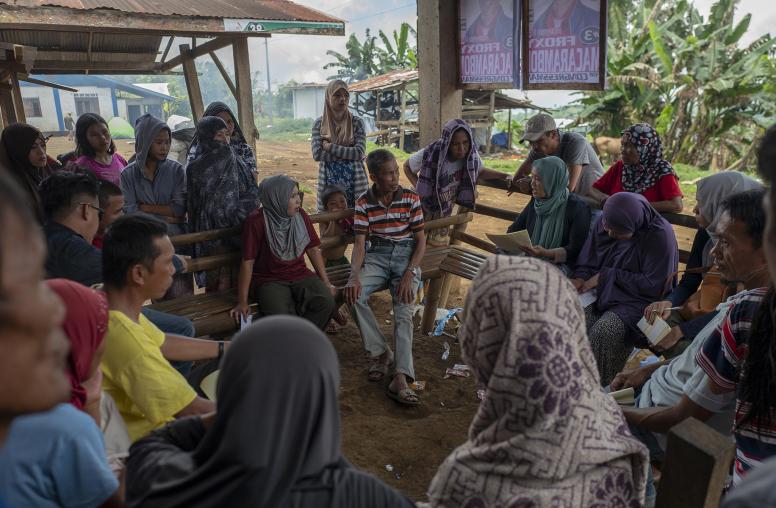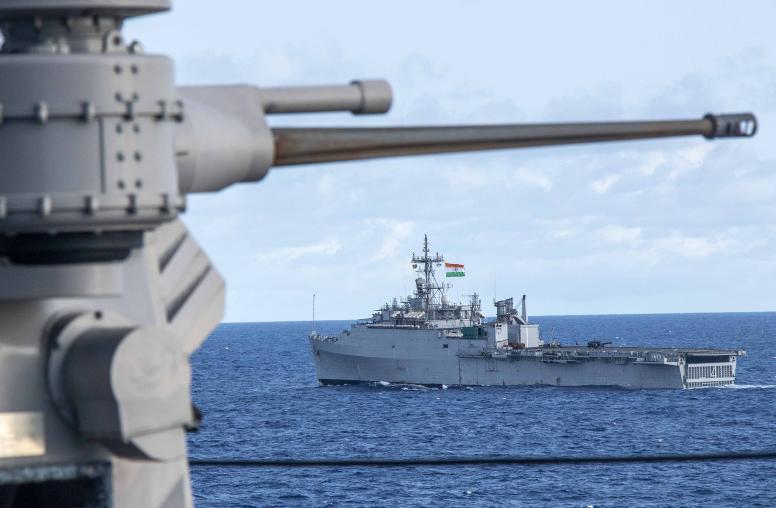A Long Exit from Afghanistan
Brumberg discusses Afghanistan in his "On Faith" blog for the Washington Post.
A long exit from Afghanistan
ISLAM AND THE WEST
By Daniel Brumberg
THE most important moment in President Obama's Dec. 1 speech on Afghanistan came when he outlined his administration's exit strategy. "Additional American and international troops," he asserted, "will allow us to begin the transfer of our forces out of Afghanistan in July 11, 20011. Just as we have done in Iraq, we will execute this transition responsibly, taking into account conditions on the ground."
These carefully crafted sentences were no doubt designed to send multiple signals: to an American populace wary of losing more young lives overseas, the President set a date for starting to withdraw American troops. But to those parties worried about a premature exit (who include the leaders of Afghanistan and Pakistan), he not only carefully noted that the withdrawal would "begin" in July 2011: he also promised a "responsible" strategy that would take account of "conditions on the ground." This is the administration's loophole, one that it may eventually find itself forced to wiggle through.
For the U.S. military, a conditional exit strategy may be the best it can hope for. Because legitimacy is part and parcel of national security, it is vital that the White House consider public opinion when choosing to send more young troops into battle. As the administration struggles to tackle a series of dire security challenges, it can hardly be blamed for forging a military strategy that is tempered -and thus perhaps constrained--by the logic of democratic politics.
Still, the essential question remains: can the White House achieve its goals with 30,000 to 35,000 more troops (including NATO)? Here there is reason for concern. The White House's implicit optimism rests partly on the assumption that a U.S.-led military surge in Afghanistan will produce some of the security and political benefits that came with the previous surge in Iraq. But as Juan Cole notes, the analogy doesn't hold. Indeed, the substantial differences between the two countries suggest that the gains achieved in Iraq will be hard to replicate in Afghanistan. Consider two of these critical differences.
Difference 1: The U.S. surge in Iraq had the implicit blessing of the Shi'ites, who constitute 60 percent of the population. Acting through the militias and the national security forces, by the time the surge began the Shi'ites had already managed to expel nearly all Sunnis from Baghdad itself. This development played no small role in convincing Sunni Arabs to back the U.S.-funded "American Awakening Councils," whose subsequent actions helped to turn the tide against non-Iraqi Islamist insurgents. Iraq's security gains were thus the product of a bloody civil war that our taciturn Shi'ite allies won through an effective alliance with the United States.
No such analogous opportunity presents itself in Afghanistan. There the largest ethnic group, the Pashtuns, constitute 42 percent of the population. While nominally represented by a Pashtun president, to secure his reelection Hamid Karzai's compatriots had to resort to corruption, intimidation and fraud. Indeed, precisely because Karzai and his allies cannot count on the wider Pashtun population, they must rely on an army in which Pashtuns constitute no more than one third of the troops, and in which Persian speaking officers from the minority Tajik community are, as Cole notes, "disproportionately represented." Given Karzai's waning legitimacy, this is hardly a promising recipe for an effective US-Afghani surge!
Difference 2: Constituting no more than 20 percent of the population, and facing a determined U.S.-backed rival, Iraq's Sunnis had little choice but to join a fragile if forward-moving process of political reconciliation. By contrast, Afghanistan's Pashtuns constitute a sizable plurality. They not only have the capacity to resist the central government, but also the motivation: deep antipathy towards the minority Sunni Tajiks, Shi'ite Hazaras and Uzbeks, who were the allies of the U.S. in the 2001-02 war against the Taliban. The latter's extremist Islamism mixes with Pashtun ethno-religious resentment to create a potent reason to oppose the efforts of Karzai and his American supporters to topple the Taliban.
Given these differences, the U.S. faces an uphill battle. The Afghan army is made up of 80,000 troops, the majority of whom are illiterate, poorly paid and not Pashtun. It is hard to see how Washington will train a 134,000 strong national army, one that can, in part or in whole, "stand up on its own" in the 18-month schedule the President outlined.
The Taliban are well aware of these facts and their strategic implications. Their best tactic may be to lie low and avoid major engagements with U.S. and NATO troops. Perhaps that is why most of the new U.S. troops will be positioned in Kandahar and Helmand provinces--the stronghold of Taliban. But if we take the fight to the enemy, do we not risk provoking greater Pashtun resentment, particularly given the sobering fact that very few members of the Afghani army come from those two key provinces?
If the answer to these questions is "yes," the conditions for a rapid exit starting in July, 2011 will not be met. And if, as President Obama has stated, "what at stake is the security of our allies and the common security of the world," we should be prepared for a prolonged or even delayed departure--a prospect that the Defense Secretary raised the other day, and which seems to be implicitly anticipated in the President's own speech.




